Workday’s HCM Supervisory Organization Structure for Hiring and Tracking Workers
Workday’s primary HCM organization is the supervisory organization, where workers are grouped and tracked. This structure is essential for hiring employees, as it represents the workday company, cost center, and region. It is crucial to understand who reports to whom and the primary structure before hiring.
Navigating the Recruitment Process in Workday
The recruitment process involves sourcing candidates, screening them, conducting interviews, conducting background checks, and providing offer letters. Once the employee agrees, they are ready for hire.
The terms of workday employment, including location, hours, and compensation, are defined during the recruitment process. Pre-hire information can be obtained through a workday integration with an applicant tracking system like Taleo or EGC.
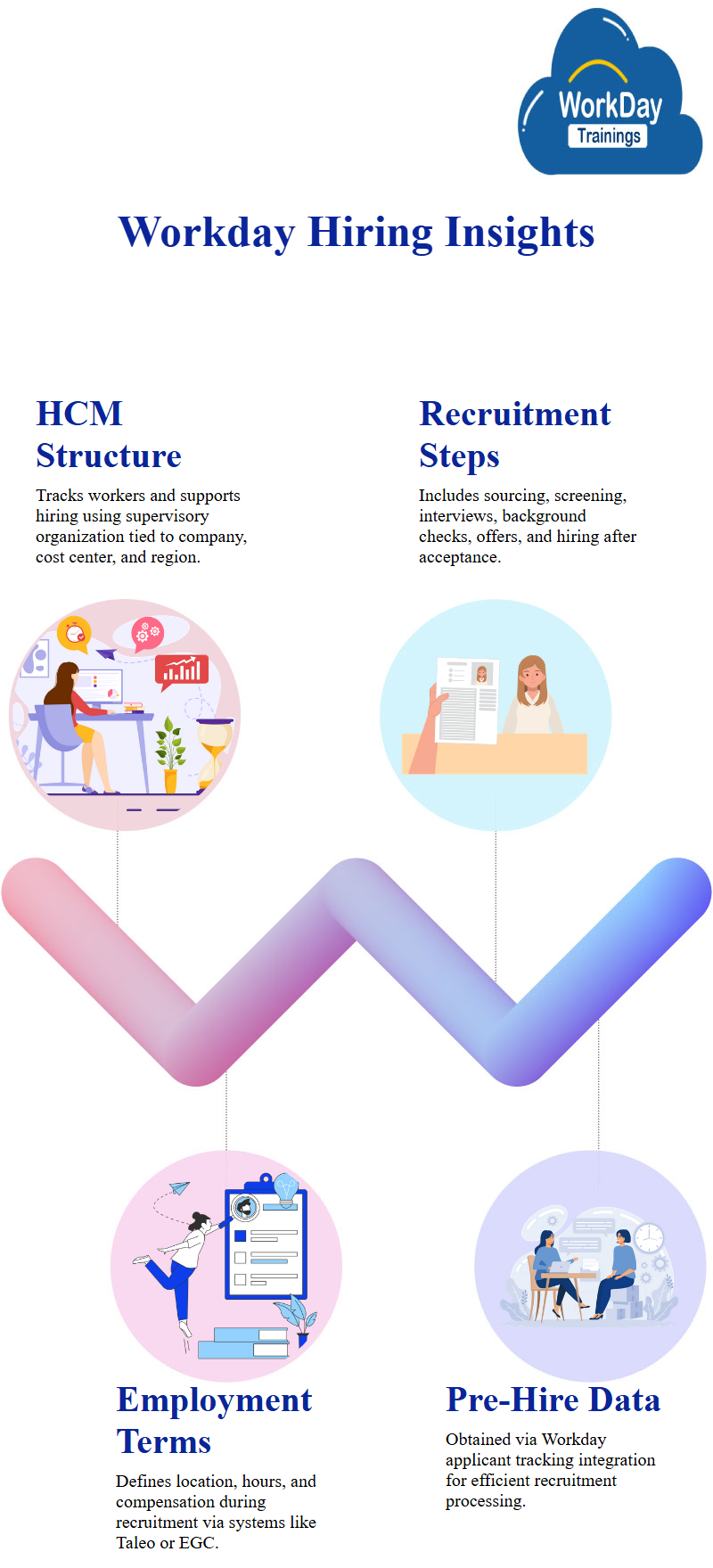
Another subset of this process is importing pre-hires using an EIB (Enterprise Interface Builder) using an Excel spreadsheet template. This bulk load of data is also provided by Workday.
There are three methods of creating pre-hires in Workday HCM: manual creation, integration, and using the Workday recruitment module.
The recruitment team provides the data, and they upload it using the workday EIB.
If the workday company doesn’t use an applicant tracking system, they can list new candidates in an Excel-based process and load it into an EIB template.
The integration process is the most common method of loading pre-hires, as workday organizations may choose not to use it due to cost or familiarity with their existing applicant tracking system.
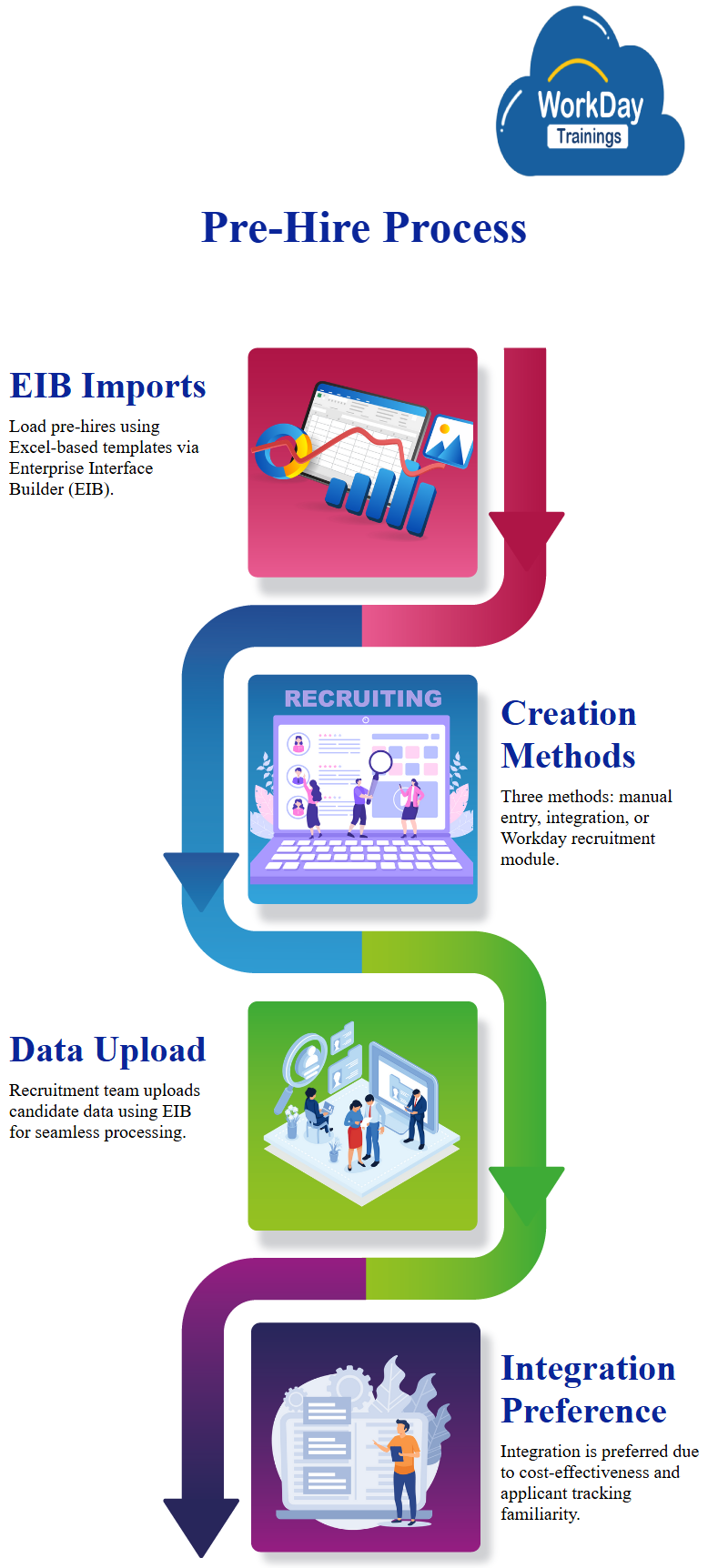
Applicant Tracking Systems: Top Solutions and Integrations
The topic revolves around the use of applicant tracking systems in organizations, such as Bullhorn, Bamboo HR, Higher Craft, and Greenhouse. These systems are used for various purposes, such as candidate assessment and interviews.
Bullhorn is an ATS application, while Bamboo HR is a workday cloud-based workday SAAS product used for applicant tracking. Higher Craft is a more suited workday application for candidate assessment and interviews.
Greenhouse is a popular applicant tracking system that is becoming the next big thing after Taleo. Integrations between Greenhouse and Workday are becoming more common, with integrations between Taleo and Workday.
In India, most large companies use Taleo, but if not, they would manually use Excel spreadsheets. When hiring, pre-hires can be used or added, and the source of the candidate is crucial.
It is important to know the candidate’s source, such as their source of information or how they learned about the position and workday organization. This information is often asked to prospective hires.
Understanding Probation: A Workday Training and Evaluation Process
Probation is a process where a new hire is trained and evaluated to ensure they meet the necessary criteria for a full-time position. It can be for new hires, promoted workers, or transferred workers.
The duration of the probation period can vary depending on the organization’s capabilities and the specific needs of the organization.
A probation period can be three months, six months, or a year, depending on the industry and company. The workday manager or competent authority evaluates the worker’s performance and may hire them if they meet the necessary conditions.
If not, they may extend the probation period or consider letting them go.
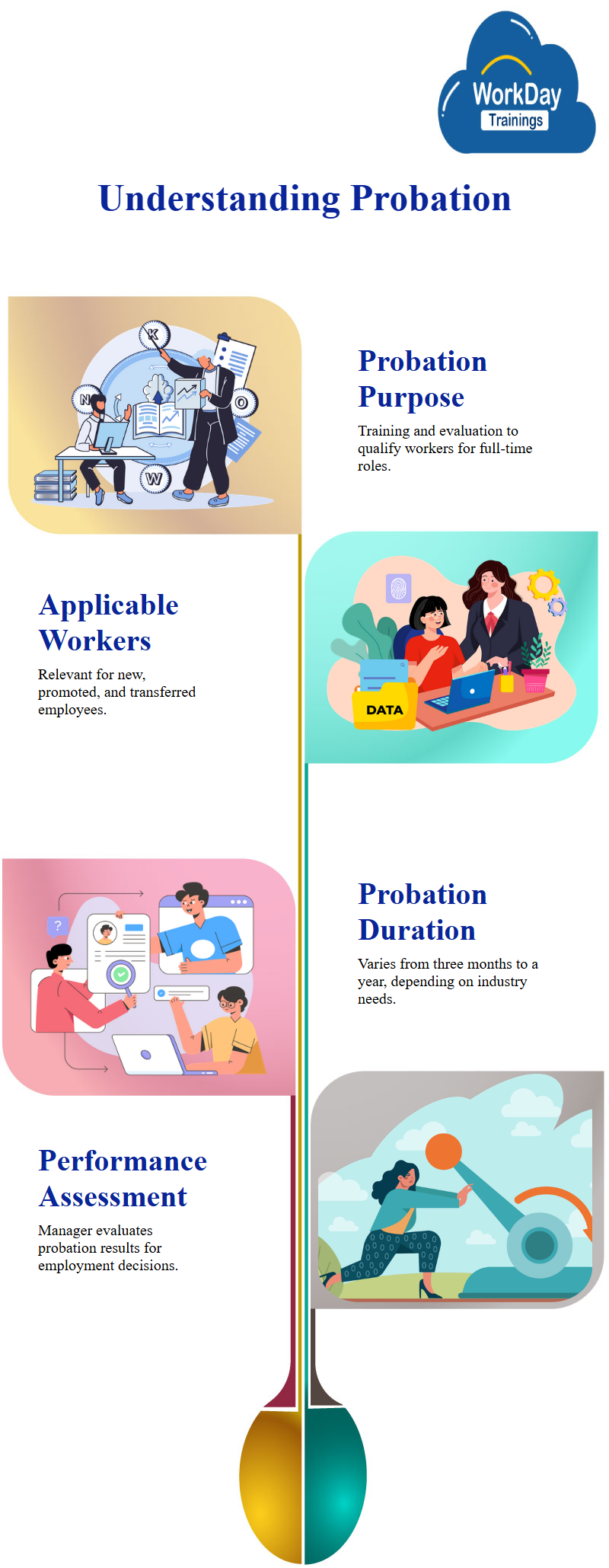
Hiring and Compensation Manual for Executive Vice President at XYZ Motors
Describe the process of hiring an employee and add compensation to the system. The process involves creating a compensation eligibility rule, verifying the eligibility workday for employees, and creating a job profile for the executive vice president.
The prefix “WW” is used to identify employees of XYZ Motors. The grade profile is set to managers or above in the US. The job profile is created and saved.
The executive vice president is named WW EVP Sales. The compensation grade is set to Managers or above. The job profile is saved and the workday supervisory organization hierarchy is moved to 1002.
The position is created in the executive position, and the workday hiring restrictions are edited. The effective date and availability date are set.
The system is now ready for the employee to start working. The Manual concludes with the need to redo some configurations and create workday salary plans and allowance plans.
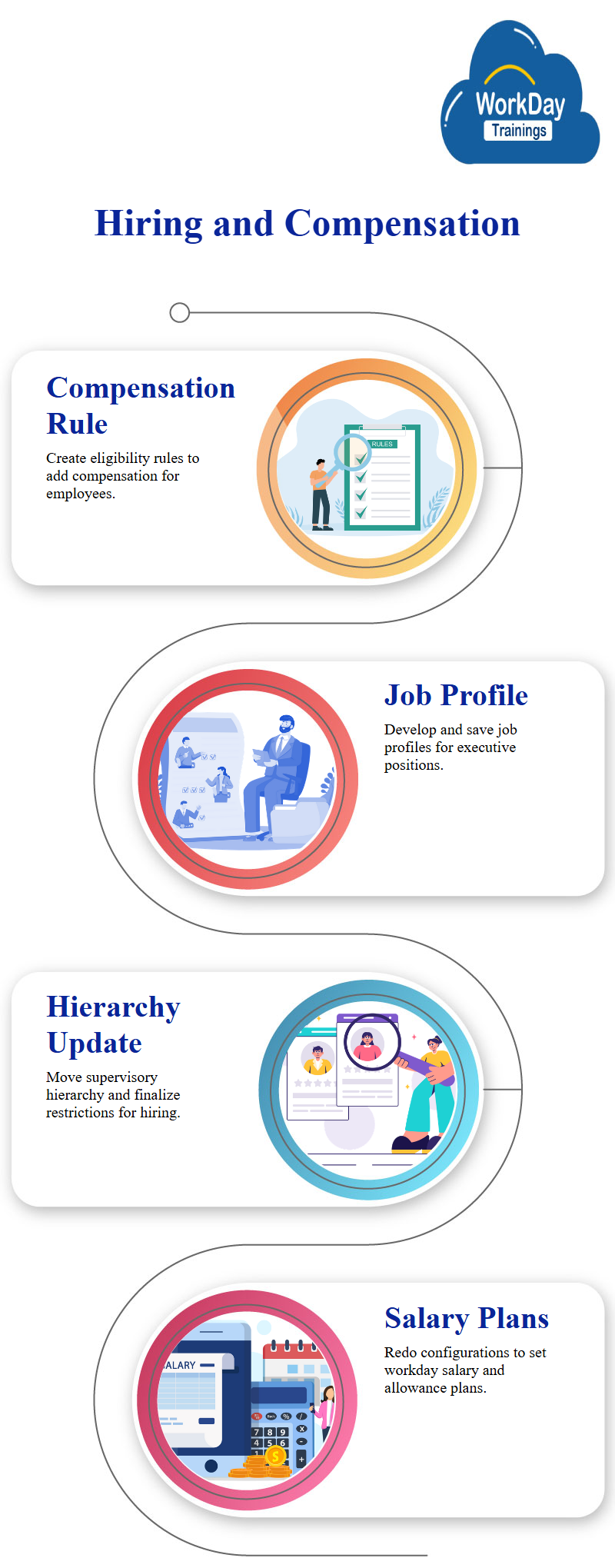
Creating Job Profiles and Compensation Process
The workday tutorial discusses the creation of two job profiles, one for workday training management and one for EVP sales. They plan to make adjustments to the hiring process and proposed compensation hire process.
They will create a simplified version of the proposed compensation hire and update the hiring process to include the compensation step.
They will go to the top-level organization, XYZ Motors, and edit the workday business process definition. They will add a step called “step B” to the hire workday business process.
By selecting the proposed compensation hire selecting the compensation partner discussing the need for an HR partner role and assigning it to a supervisory organization. They will go to related actions and assign workday roles, using the dates of yesterday and today.

This ensures that the HR partner role is assigned to the supervisory organization. The workday tutorial concludes by expressing their satisfaction with the proposed changes.
In search of an HR partner and assigning it to Logan McNeil. They have updated their business process to allow for compensation and have assigned the role to their organization. The HR partner is inherited and will be assigned to Logan McNeil.
They create a workday salary plan for XYZ motors, using FTE percentage and base pay. They select all employees as the HR partner and exclude merit. They also create an allowance plan for all executive vice presidents, with a monthly compensation element of $1200 US dollars.
The frequency is set to be monthly. It decided to change the eligibility rule slightly, as the job profile used five executive vice presidents instead of three, which won’t match. They remove the other two and complete the job profile.

Salary and Allowance Plan Creation and Management
The Tutorial discusses the creation of a salary and allowance plan, and the need to put it all together in a package.
It mentions the importance of using a supervisory organization hierarchy to ensure that the rules are applied to the hiring process for the organization.
They also mention the need to create a pre-hire for a worker named Sam Williams, who needs to provide an email address at test.com workday work.
Resolving Compensation Issues for Management-Level Employees.
Users then tried to hire a higher employee, but the compensation package defaulted due to the grade being for managers or above. The salary component was added, but the allowance was not included.
Users could forcefully add the allowance, but it would not prompt for it. The worker was not eligible for the allowance, as it was only designed for Executive Vice-Presidents.
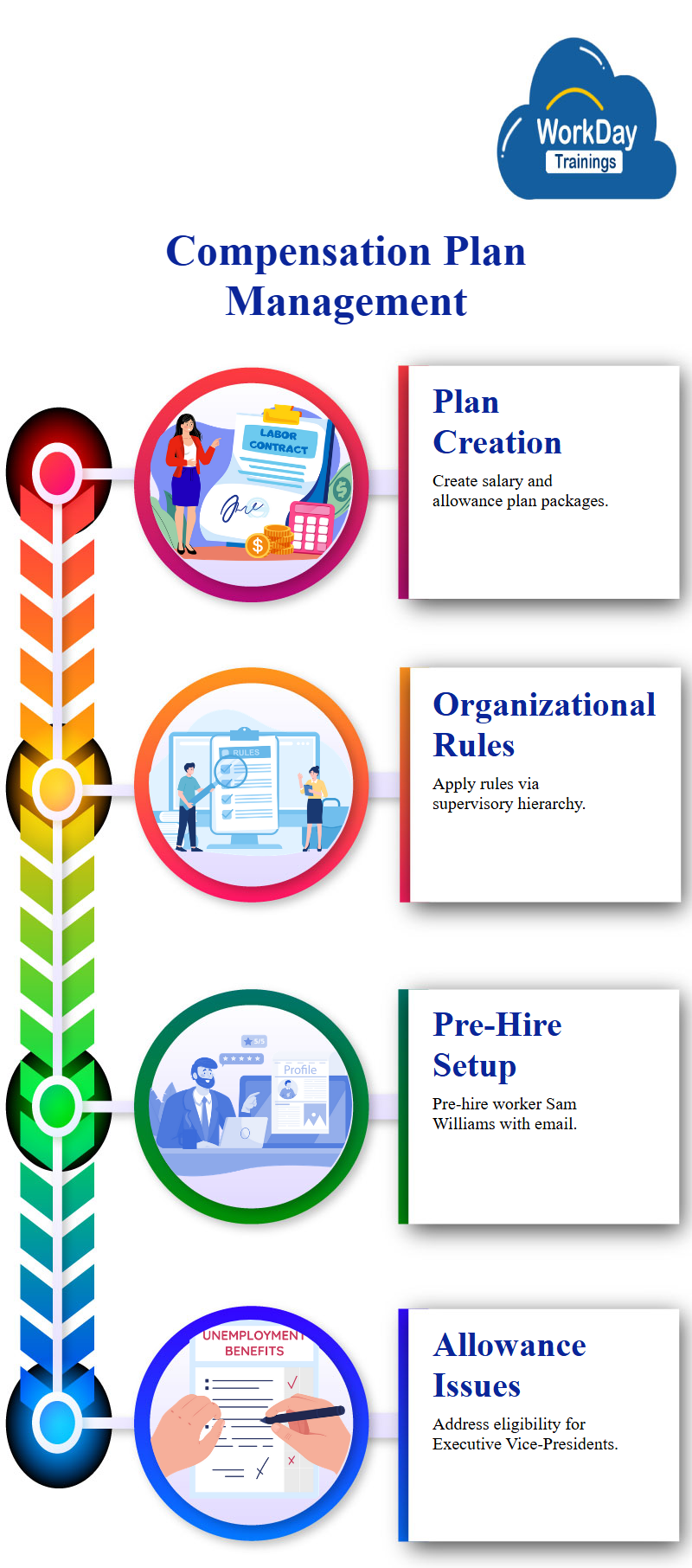
To resolve this workday issue, the user edited their compensation package and found that the eligibility rule for the allowance did not match the criteria for the management level. They also found that the compensation grade did not match the criteria for the management level.
Users then debugged the workday issue by checking the compensation plans and ensuring that the eligibility rule for the allowance was correct.
They found that the compensation plan had an eligibility rule for the car allowance and salary plan for all employees of XYZ Motors.
The issue was resolved by hiring a new worker in the workday organization, which was already filled out and created a new pre-hire.
The job profile was also used, but the package defaulted and the salary was not included. The issue was resolved by canceling the pre-hire and re-hiring the employee.
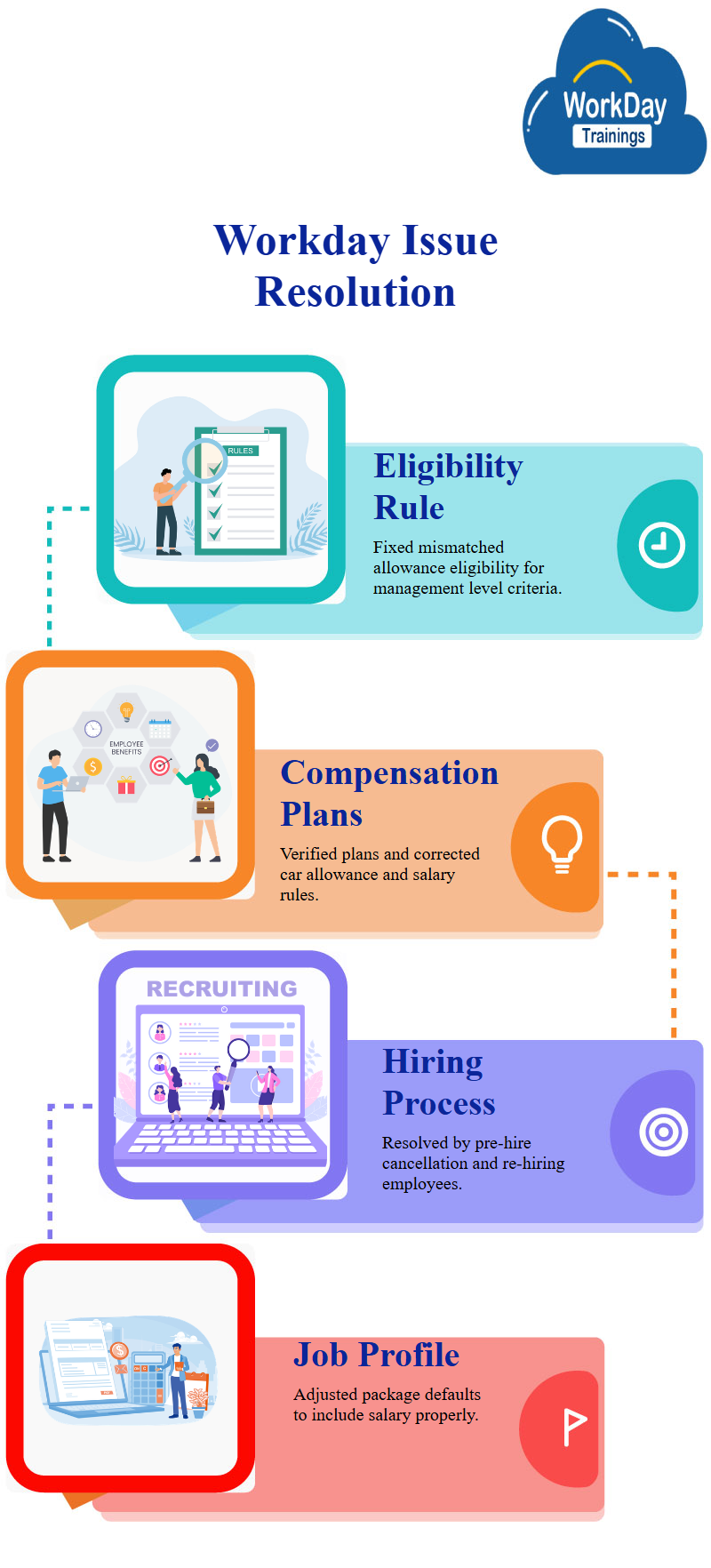
Managing Unique Employee IDs with Sequence Generators
One option is to generate a unique sequence workday for employee IDs, which can be done through the Edit workday tenant setup in Workday HCM
This allows for the creation of sequence generators, which can be used to define the sequence number of employee IDs and other job requisitions. The sequence format can be set as RSA and Seq, with the option to add zeros if desired.
The edit workday tenant setup allows for the creation of sequence generators, which can control the way employee IDs are generated.
This includes pre-hire IDs and employee contingent workers. Dependent IDs are beneficial for businesses, as they allow for better control over the generation of employee IDs. The process is ongoing and will be updated as needed.

Custom Validation for Hiring Processes using Workday
Workday allows organizations to define ID sequence generators and use custom validation to restrict hiring based on specific criteria. For example, if a region code is not valid, an error message will be displayed. Custom validation can be used in workday business process steps to include conditional rules in the process.
Workday Security and Hiring Restrictions for Supervisory Organizations
For workday supervisory organizations, hiring restrictions can be restricted by specifying the company and the region code.
Security is another important aspect of Workday, with different types of organizations such as location hierarchy and supervisory organizations having configurable security.
Workday roles within these organizations have workday security groups associated with them, such as managers and workday HR partners.
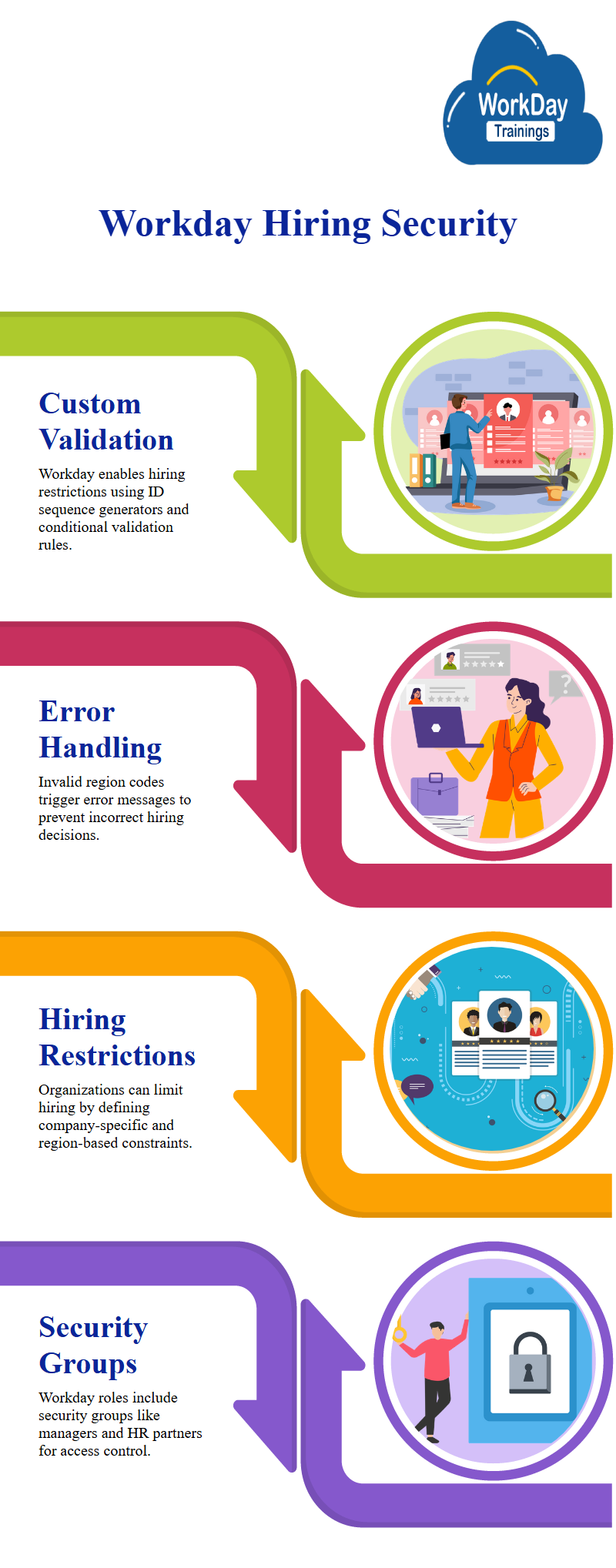
Work Day workday security roles Permissions
In the context of workday security, organizations have roles associated with them, such as workday accounting specialists, controllers, and benefits partners.
These roles are typically related to a company or supervisory organization, and the roles need to have the same level of security permissions for their specific organization.
Managing Role-Based Security in Work Environments.
Workers are associated with roles, which are tied to organizations and the security group. The role is also tied to a role-based security group, and the workday security group is given permissions in domains and subdomains.
To modify permissions, users can create role-based groups, give permissions, and activate them. This concept is complex and interesting, and understanding the different types of security and how to configure security in work is essential for better understanding and workday configuration.
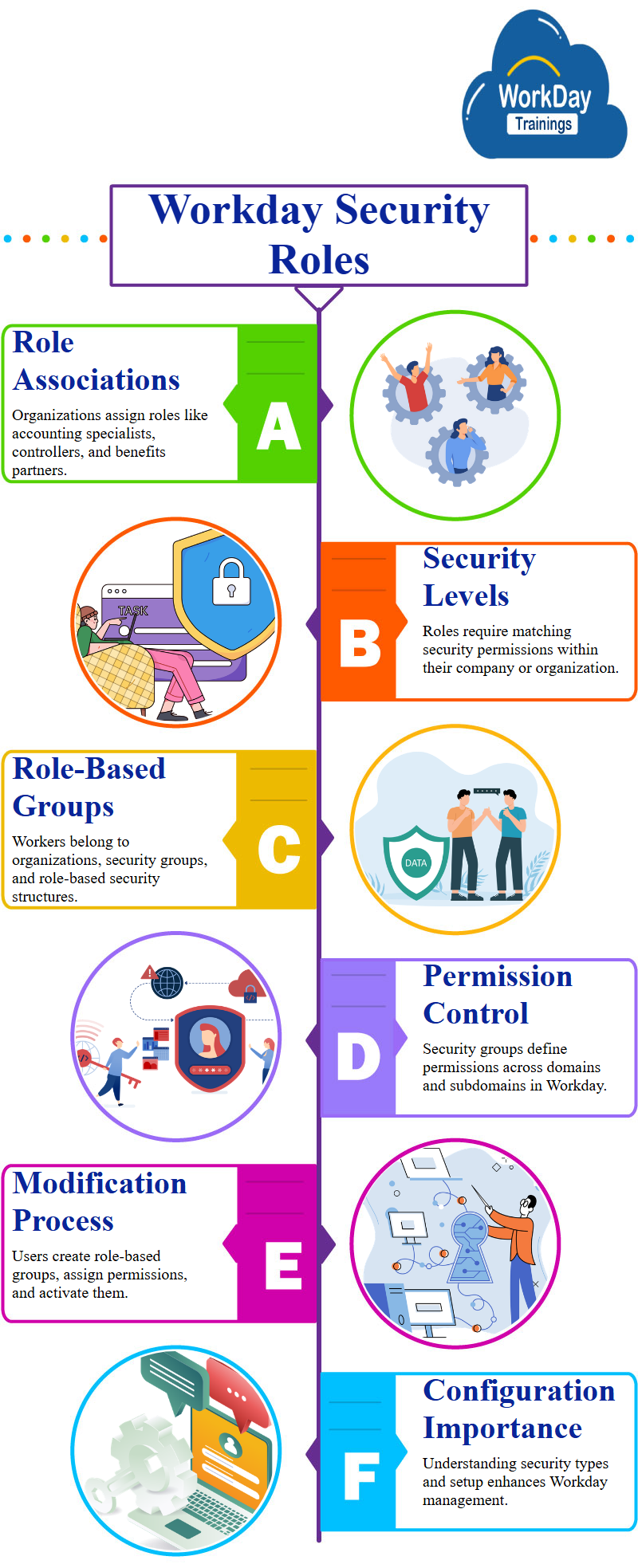
HR Partner Roles and Permissions in Business Process Security Policies
In the example provided, the business process security policy allows workday HR partners to initiate workday reviews and approve processes, while the compensation partner is responsible for the higher step.
The security component should consider the specific roles and permissions needed for each group.
Securing Your Work Environment: Best Practices
Overall, security in working involves understanding the different types of security, modifying permissions, creating role-based groups, and ensuring proper workday configuration and control of access to data and workflows.

Harsha
New Technology, let's explore together!